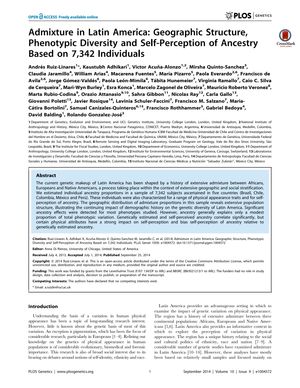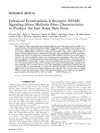Admixture in Latin America: Geographic Structure, Phenotypic Diversity, and Self-Perception of Ancestry Based on 7,342 Individuals
September 2014
in “
PLOS Genetics
”

TLDR The study found that in Latin America, ancestry varies by location, influences physical traits, and affects how people perceive their own heritage.
The document summarizes a study that examined the genetic ancestry, physical traits, and self-perception of ancestry among 7,342 individuals from various Latin American countries. The study found significant geographic variation in ancestry, with European ancestry associated with lighter pigmentation and African ancestry with darker skin and greater hair curliness. Ancestry explained a modest proportion of the variation in physical traits, with the most variance observed in skin pigmentation. Self-perceived ancestry was influenced by physical appearance and social factors, leading to biases in self-assessment compared to genetic estimates. The study highlighted the complex interplay between genetics, phenotype, and social factors in Latin America and the importance of a multidisciplinary approach in human diversity research.

